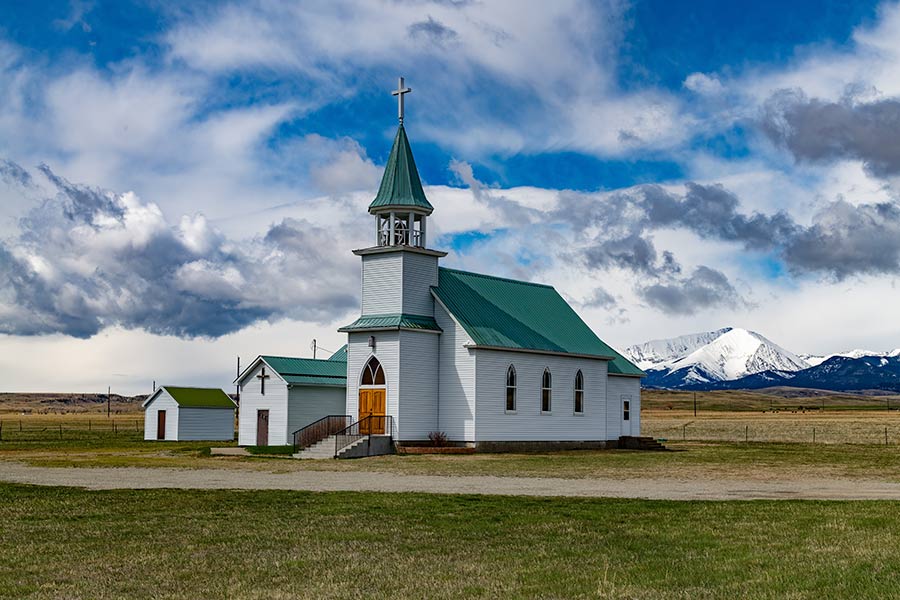
Sometimes, a phrase takes on a life of its own and becomes so rhetorically powerful that it can be deployed almost mindlessly, without real consideration of its original meaning. “Separation of church and state” is one such phrase.
Consider a couple of examples.
In 2011, middle-schooler Brian Hickman auditioned to dance to a contemporary Christian song for his public school’s talent show. Days later, Brian’s mom was told by the school principal that the “separation of church and state” prohibited her son from performing to the song.
Three years later, a Colorado high school student named Chase was told by an administrator that his Christian prayer meeting, held during a free period, would have to stop due to the “separation of church and state.”
These two stories bear several obvious and striking similarities. But here’s one more: Alliance Defending Freedom filed a lawsuit in both of these instances. And in both Brian’s case and Chase’s, the school backed down.
The appeals to the “separation of church and state” did not hold up. And for good reason: while the term may be a convenient rhetorical tool, it does not represent any real constitutional doctrine. And now, it’s at issue in yet another ADF case, Oklahoma Statewide Charter School Board v. Drummond.
Where did the phrase originate?
The phrase “separation of church and state” is nowhere to be found in the U.S. Constitution. The term has been based on the First Amendment’s Establishment and Free Exercise Clauses, but those clauses merely state that Congress “shall make no law respecting an establishment of religion, or prohibiting the free exercise thereof.” The phrase “separation of church and state” rather originates in a letter sent by President Thomas Jefferson to a group of Baptists in Connecticut. The Danbury Baptist Association, a group of 26 churches in the state, had written to Jefferson to congratulate him on his election and convey their concern that Connecticut’s system of government (in which the Congregational Church was the official or “established” denomination) had led to their ill treatment.
In their letter, the Baptists affirm their belief in religious liberty—“That Religion is at all times and places a Matter between God and Individuals”—and express their dismay that they enjoy this freedom only as “favors granted” rather than as an inalienable right.
Replying to the Danbury Baptists, Jefferson agrees that “religion is a matter which lies solely between Man & his God.” Further, the president notes that the language of the First Amendment’s Establishment and Free Exercise Clauses build a “wall of separation between Church & State.”
This context clarifies that Jefferson was speaking of protecting religious exercise from an overbearing government. His response to the Danbury Baptists was a reassurance that the United States Congress would not impede their free exercise of religion.
Supreme Court precedent
Unfortunately, the promise of religious freedom shared by both Jefferson and the Danbury Baptists has not always been realized in American history. Indeed, Jefferson’s figure of speech has been distorted and wrenched from its original context.
The Lemon test
In the 1971 case Lemon v. Kurtzman, the Supreme Court created a way to evaluate whether government actions violated the Establishment Clause. Under Lemon, a law had to pass a three-part test to avoid violating the establishment clause:
- First, the law must have a secular purpose.
- Second, the law must not have the primary effect of promoting or disparaging religion.
- Third, the law must not excessively entangle the government in religion.
For decades, the Court used this vague, one-size-fits-all standard before finally abandoning it in the 2022 case Kennedy v. Bremerton School District. In that case, the Court declared that it would now look to “historical practices and understandings” to determine whether a government’s actions violate the Establishment Clause.
A trilogy of wins for free exercise
While the Kennedy case restored a proper understanding of the Establishment Clause, a series of other cases clarified the scope of the Free Exercise Clause.
Trinity Lutheran
The 2017 case Trinity Lutheran Church of Columbia v. Comer centered on a Missouri state program that provided grants for playground resurfacing. Trinity Lutheran Church applied for a grant to resurface the playground of the church’s preschool. But the state denied the grant—simply because the preschool was operated by a religious organization.
Represented by ADF, Trinity Lutheran challenged Missouri’s decision and took the case all the way to the Supreme Court, which ruled that the state’s exclusion of churches from the program violated the Free Exercise Clause.
Espinoza
Three years after Trinity Lutheran, the Court heard Espinoza v. Montana Department of Revenue, another case that involved public programs in the context of education. A Montana Supreme Court decision had invalidated a state tax credit program because families might use that money for tuition at a religious school. The Supreme Court reversed that ruling.
Carson
Carson v. Makin, the third case in this “trilogy,” also involved a state educational program. The state of Maine operates a tuition assistance program in certain areas that helps families pay for tuition “at the public school or the approved private school of the parent’s choice.” But there was a catch: “sectarian” (i.e., religious) schools were not eligible. The Supreme Court ruled in 2022 that the “nonsectarian” requirement in Maine’s tuition assistance program violated the Free Exercise Clause.
ADF back at the Court
This term, the Supreme Court is hearing another case involving education that could have far-reaching implications for religious freedom. In Oklahoma Statewide Charter School Board v. Drummond, ADF is defending the charter school board’s decision to approve an application for a virtual Catholic charter school called St. Isidore of Seville. Oklahoma Attorney General Gentner Drummond sued the board for that decision despite the Supreme Court precedent outlined above.
In Oklahoma, private organizations may partner with a sponsor and apply to operate charter schools in the state. The Statewide Charter School Board may then approve the application. That’s exactly what happened when two Catholic dioceses, the Archdiocese of Oklahoma City and the Diocese of Tulsa, applied to establish St. Isidore.
There was just one problem. The Oklahoma Charter Schools Act stipulates that schools must be “nonsectarian.” In other words, religious organizations need not apply. That violates the First Amendment. As we’ve seen, the Supreme Court has ruled repeatedly that government actors cannot exclude religious organizations from otherwise available public benefits simply because they are religious. So the board properly refused to enforce that nonsectarian provision of the law and approved St. Isidore’s application.
Options in education: constitutional and beneficial
Contrary to what many believe, the “separation of church and state” isn’t a constitutional principle. Rather, it’s a misnomer rooted in a historical misunderstanding and subsequent jurisprudence. While the church and the state are separate institutions, our Constitution does not demand that our governments have no engagement with religious groups. In fact, our nation’s history shows that the opposite is true: when governments work together with religious organizations, they can accomplish much good.
That is the promise of religious charter schools such as St. Isidore—such schools give parents more affordable, high-quality options for their children’s education. This year, the Supreme Court has the opportunity to affirm the constitutionality of the charter school board’s decision. Oklahoma should be able to choose the best schools for its charter-school program, and more choices in education will benefit parents and children alike.






